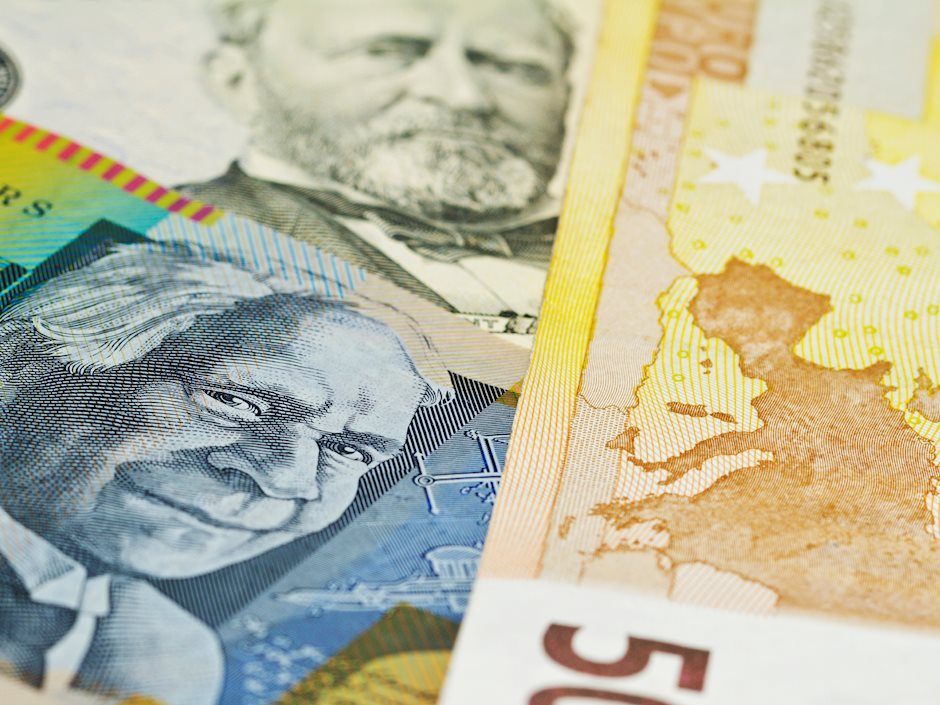EUR/AUD Price Forecast: Outlook remains negative below 1.6300
- EUR/AUD softens to around 1.6285 in Monday’s early European session.
- The cross maintains the negative outlook below the key 100-period EMA, but further consolidation cannot be ruled out.
- The initial support level emerges at 1.6264; the immediate resistance level is seen at 1.6317.

The EUR/AUD cross weakens to near 1.6285 during the early European session on Monday. The Australian Dollar (AUD) gathers strength against the shared currency amid the hawkish comments from Reserve Bank of Australia (RBA) Governor Michele Bullock last week.
The RBA reiterated that “the Board is not ruling anything in or out” and that there is “the need to remain vigilant to upside risks to inflation.” Traders brace for the RBA Meeting Minutes from its last board meeting for more clues on future rates, which are due on Tuesday.
According to the 4-hour chart, the EUR/AUD cross keeps the bearish vibe, with the price holding below the key 100-period Exponential Moving Average (EMA). However, further consolidation cannot be ruled out as the Relative Strength Index (RSI) hovers around the midline, suggesting the neutral momentum in the near term.
The lower limit of the Bollinger Band at 1.6264 acts as an initial support level for the cross. The crucial contention level is seen in the 1.6205-1.6200 region, representing the psychological level and the low of November 12. The additional downside filter to watch is 1.6135, the low of October 18.
On the bright side, the first upside barrier for EUR/AUD is located at 1.6317, the 100-period EMA. Further north, the next hurdle to watch is 1.6337, the upper boundary of the Bollinger Band. Any follow-through buying could see a rally to 1.6430, the low of November 5.
EUR/AUD 4-hour chart
Australian Dollar FAQs
One of the most significant factors for the Australian Dollar (AUD) is the level of interest rates set by the Reserve Bank of Australia (RBA). Because Australia is a resource-rich country another key driver is the price of its biggest export, Iron Ore. The health of the Chinese economy, its largest trading partner, is a factor, as well as inflation in Australia, its growth rate and Trade Balance. Market sentiment – whether investors are taking on more risky assets (risk-on) or seeking safe-havens (risk-off) – is also a factor, with risk-on positive for AUD.
The Reserve Bank of Australia (RBA) influences the Australian Dollar (AUD) by setting the level of interest rates that Australian banks can lend to each other. This influences the level of interest rates in the economy as a whole. The main goal of the RBA is to maintain a stable inflation rate of 2-3% by adjusting interest rates up or down. Relatively high interest rates compared to other major central banks support the AUD, and the opposite for relatively low. The RBA can also use quantitative easing and tightening to influence credit conditions, with the former AUD-negative and the latter AUD-positive.
China is Australia’s largest trading partner so the health of the Chinese economy is a major influence on the value of the Australian Dollar (AUD). When the Chinese economy is doing well it purchases more raw materials, goods and services from Australia, lifting demand for the AUD, and pushing up its value. The opposite is the case when the Chinese economy is not growing as fast as expected. Positive or negative surprises in Chinese growth data, therefore, often have a direct impact on the Australian Dollar and its pairs.
Iron Ore is Australia’s largest export, accounting for $118 billion a year according to data from 2021, with China as its primary destination. The price of Iron Ore, therefore, can be a driver of the Australian Dollar. Generally, if the price of Iron Ore rises, AUD also goes up, as aggregate demand for the currency increases. The opposite is the case if the price of Iron Ore falls. Higher Iron Ore prices also tend to result in a greater likelihood of a positive Trade Balance for Australia, which is also positive of the AUD.
The Trade Balance, which is the difference between what a country earns from its exports versus what it pays for its imports, is another factor that can influence the value of the Australian Dollar. If Australia produces highly sought after exports, then its currency will gain in value purely from the surplus demand created from foreign buyers seeking to purchase its exports versus what it spends to purchase imports. Therefore, a positive net Trade Balance strengthens the AUD, with the opposite effect if the Trade Balance is negative.
Author

Lallalit Srijandorn
FXStreet
Lallalit Srijandorn is a Parisian at heart. She has lived in France since 2019 and now becomes a digital entrepreneur based in Paris and Bangkok.


















